Good things happen slowly, bad things happen fast
Reflecting on a decade of the Open Badges ecosystem

Today, a pre-recorded keynote panel conversation goes live to kick off the 2021 International Council of Badges & Credentials Symposium. My interlocuters were Kerri Lemoie and Phillip Long and we could have talked for hours!
As I was preparing for this panel discussion, I made notes which turned into this post. Like any history written by someone who was part of the events, it is partial and personal. I will have missed out things both obvious and important.
You may also want to read this post published last week on the evolving badges and credentials ecosystem.
The development of standard can take a while to bear fruit
I can remember being excited about Bluetooth when I found out about it in 1998, but it wasn’t until 10 years later that people were using it everyday for useful things like exchanging files or connecting devices.
So I realised that it would probably take a decade for Open Badges to become mainstream. It’s nice when predictions turn out to be correct! We’re now in the situation where badges are popping up everywhere, with hundreds of millions of them issued in the last couple of years alone.
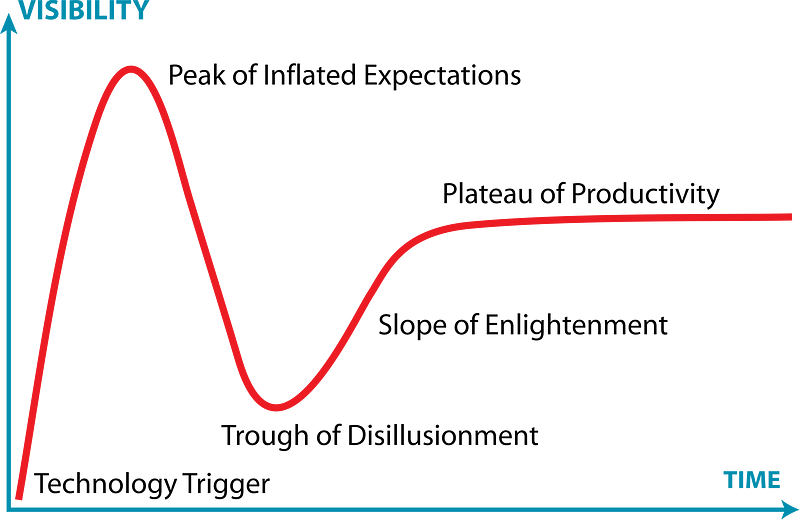
I admit to being skeptical about the Gartner hype cycle (see diagram above) when I first discovered it. However, it’s actually described the development of Open Badges pretty well over the last 10 years!
“Communications tools don’t get socially interesting until they get technologically boring,” (Clay Shirky)
What follows isn’t just a nice story, it’s instructive in terms of how technologies develop, and indeed how important people are to the process. Technological development is not inevitable, nor is technology neutral. People make and shape it, making decisions along the way that can have far-reaching implications.
Technology Trigger (2011–13)
It’s worth remembering that badges are nothing new. Anyone who can remember pre-social media online interactions will remember badges in web forums. And, of course, badges in games have been around forever.
Some organisations were experimenting with digital badges before 2011, but these were siloed and easy to right-click and copy. The ‘technology trigger’, the innovation with Open Badges, was to invent and make available an open metadata standard.
This standard not only described the required and optional fields of information for the metadata, but also provided a way in which badges could be verified.
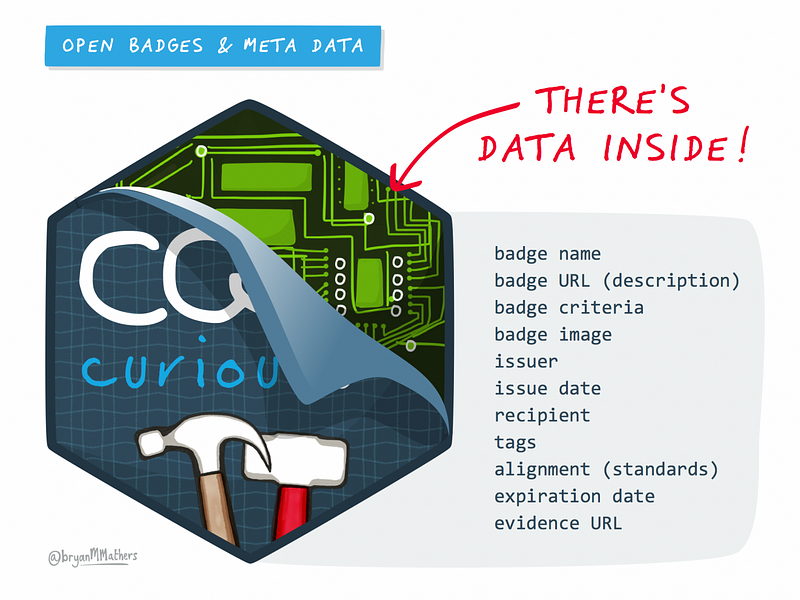
The initial work in this area was funded by the MacArthur Foundation, which funded a lot of the Mozilla Foundation’s work around online learning in the early days. The original white paper explored four different learner scenarios and was widely interpreted, especially given the zeitgeist, to be supportive of thinking about a landscape in which we wouldn’t need universities anymore.
This proved to be a distraction, as innovation is rarely either/or but rather and/and. There was pushback in some quarters of formal education, especially in Higher Ed where there was much talk of extrinsic and intrinsic motivation and that nebulous term: “quality”.
The v1.0 release of the Open Badges came in March 2013, with a lot of fanfare and was followed by the Chicago Summer of Learning that year where thousands of badges were issued to young people in the city of Chicago.
Personally, I attended around 50 events that year as part of the Mozilla Open Badges team, popularising and explaining the possibilities. One of my first was the 2012 ePIC conference which has been a galvanising force since that time in thinking about badges for recognition rather than just credentialing.
Peak of inflated expectations (2014)
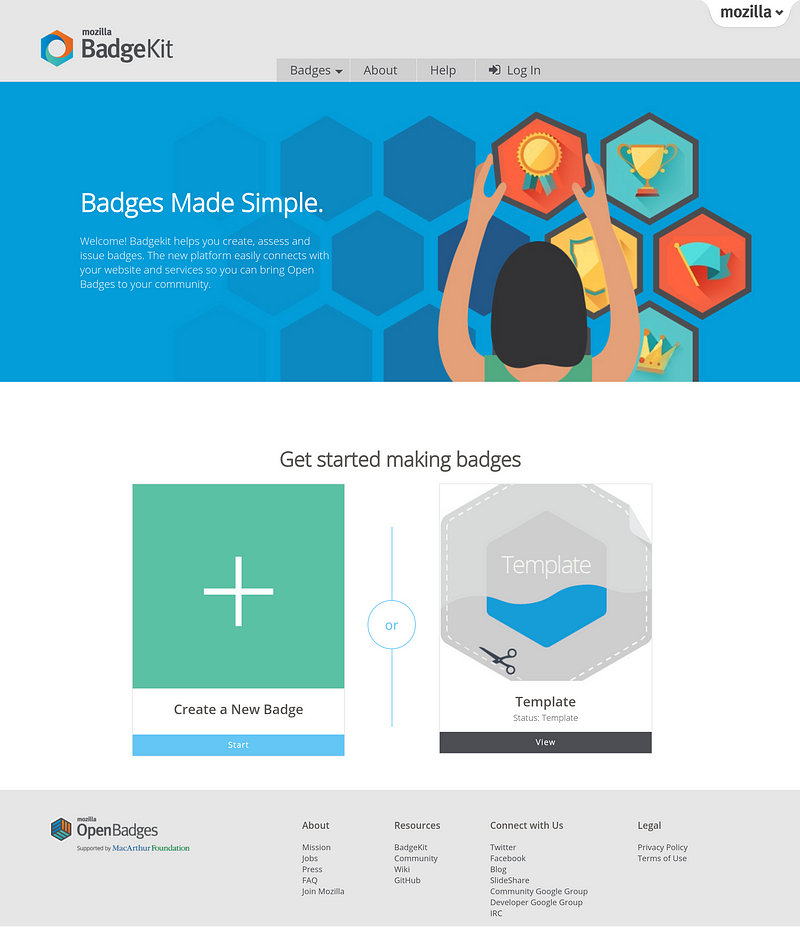
Open Badges were on a roll and, to capitalise on this, the Badge Alliance was formed. Many of the Mozilla Open Badges team transferred over to the new organisation and work started in earnest on BadgeKit, a way that any organisation could set up and issue badges.
2014 was a great building year for the badges ecosystem and the Badge Alliance (BA) network, and 2015 has been an exciting year so far. Rooms are overflowing for badging-related presentations at conferences around the world, more compelling use cases are popping up all the time, and the level of understanding and conversation about badges is far higher than two years ago. While the Badge Alliance has played a pivotal role in this progress, much of the work has come from the community itself.
The BA was created to grow the community and seat the ownership and accountability of the badging work in the ecosystem that was using badges. We’ve accomplished that — the BA has grown, with hundreds of organizations pledging to work together to issue and understand Open Badges. The first year of the BA’s investigation, community-building, and outreach provided us with a better understanding of the state of badges in the world, and connected a vibrant community around collaborating to use a shared technology. The momentum behind Open Badges has never been stronger.
(Open Badges blog)
At the time, I was a co-chair of the Digital / Web Literacies Working Group at the Badge Alliance, but otherwise wasn’t directly involved in the day-to-day operations, having remained at the Mozilla Foundation to work on the Web Literacy Map.
It was pretty clear, though, that the hype around Open Badges — including talk about the ‘end of universities’ was greater than the technical ability for the badges ecosystem to develop. The technology needed to mature, and so Nate Otto took over from Erin Knight as Executive Director to steer it in that direction.
It’s hard to underestimate the impact that Erin and the team she built had on the online learning landscape at the time. The team, never more than around 10 people, galvanised a community of thousands of technologists and educators into action.
Trough of disillusionment (2015–16)
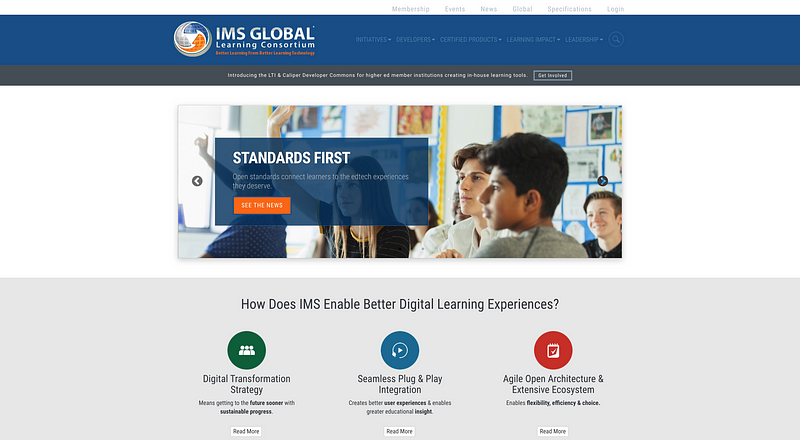
I left Mozilla in April 2015 for the world of consultancy, working with City & Guilds and other organisations on Open Badges and projects around digital literacies. The narrative that was came out was that the Badge Alliance was only ever meant to be a temporary steward for the Open Badges standard before it found a new home at IMS Global Learning Consortium.
Whatever the true story, there were severe headwinds as the MacArthur Foundation moved on to fund other initiatives. Nate was working at the Badge Alliance on top of his role on Badgr, and this was the time when the world was unreasonably excited about blockchain. In fact, it got to the stage where, when presenting on badges, I’d have slides ready for the inevitable blockchain questions. I tried to explain that not every badge is high-stakes, and other problems blockchain can raise.
After a flurry of excitement about the possibilities of badges, people were a little bit at a loss as to what to do with them. We were in the trough of disillusionment. There were plenty of academic institutions experimenting with badges for staff CPD but the assumption was that blockchain would fix credentialing. Initiatives such as MIT’s Blockcerts, which were compatible with the Open Badges specification, got a limited amount of traction.
Slope of enlightenment (2017–19)
Thankfully, along with City & Guilds, organisations started using badges in new and interesting ways. A perfect example of this is IBM and, in particular David Leaser. Having run a pilot in 2015 and introduced the first IBM badges in 2016 for “resume-worthy activities,” by 2019 he was an advocate for Open Badges not only for credentialing but for recognition. In mid-2020, IBM issued its three millionth badge showing how quickly these things can scale.
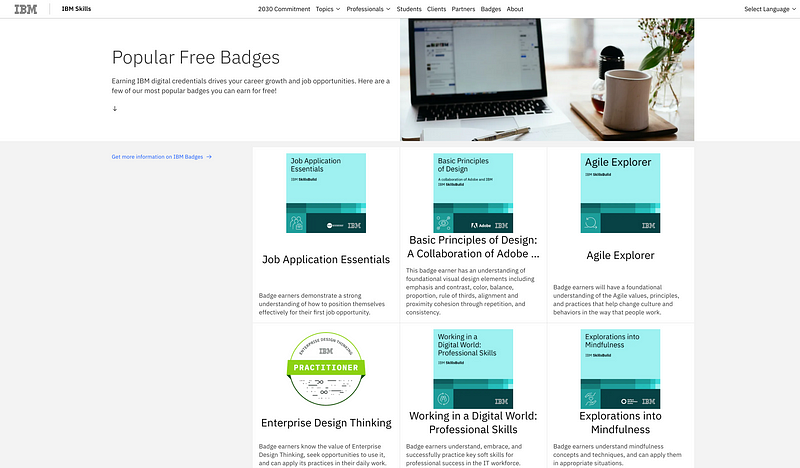
Badges started popping up on LinkedIn, within email signatures, as well as being shared on resumes and CVs. These were often from professional associations such as the SSSC, who not only issued them for CPD activities, but for activities such as implementing the recommendations of an important resport within the care sector.
There was a growing recognition that badges were useful tools for marketing, for talent acquisition, and for team formation. Inevitably, organisations came together to standardise on frameworks within badges were issued, for example the European MOOC Consortium who established the Common Microcredential framework.
Building on this, and given the cost of university tuition and talk of a growing ‘skills gap,’ there emerged what has become known as the Credential As You Go (CAYG) movement. CAYG focuses on incremental credentialing in an attempt rather than the all-or-nothing approaches of bachelor’s degrees and the like.
Open Badges not only began to be known by many different names but were also starting to be used in quite different situations.
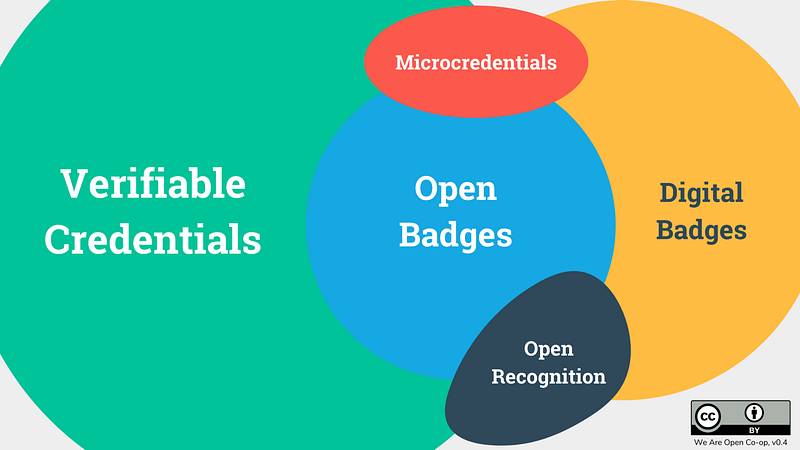
Plateau of productivity (2020+)
The Covid-19 pandemic merely accelerated a process which was already underway. As we all worked and/or learned from home, there was a need for solutions which allow us to represent ourselves at a distance.
Whereas previously people would get in touch to discuss piloting badge programmes, the talk is now very much about adding them into to augment existing systems. For example, Multiverse is an organisation “building an outstanding alternative to university and corporate training via professional apprenticeships”. They are an IMS-certified badge issuing platform, but are no a general-purpose issuer. Rather, they use Open Badges to add superpowers to their programmes.
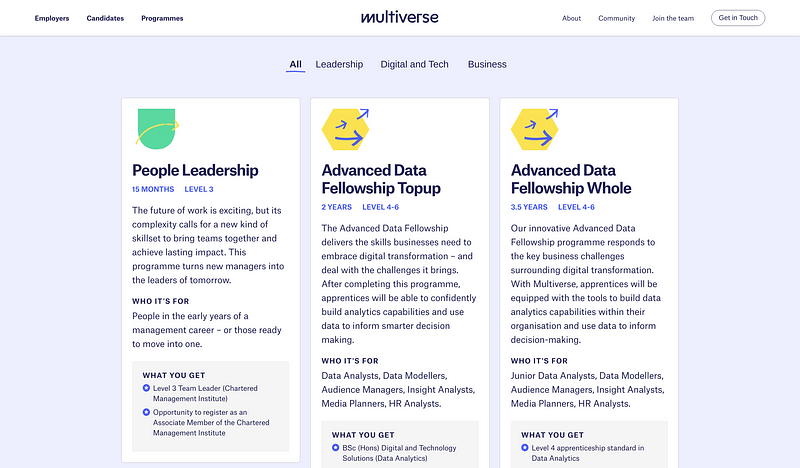
The next step, which is the move to Open Badges 3.0 and alignment with the W3C’s Verifiable Credentials standard, will be an interesting one. Decentralised identifiers will do away with the need to issue to email addresses, and issuers can specify for the first time what kind of thing they are issuing due to alignment with the Comprehensive Learner Record (CLR). For example, the CLR states whether something is an assignment, membership, a degree, or even a license.
Conclusion
The best way to predict the future, as the saying goes, is to invent it. So I’d like to thank all of the people who have, and are currently, working to make Open Badges into the force for change that it has become. I’ve already named some people by name, for example Kerri Lemoie and Nate Otto, but there are so many people who have been visible and active in the community over the decade, as well as those who have been quietly working away behind the scenes.
One of the reasons I got involved in Open Badges a decade ago was because I wanted a world where young people, including my own children, could choose whether to go to university. With development such as CAYG and providers such as Multiverse enabling professional apprenticeships, I feel that we’re getting there.
But more than that, I feel like Open Badges and the work around it is enabling a world where a much wider and more diverse set of skills are valued. And that’s got to be something worth celebrating! 🎉

If you’d like to keep up-to-date with some of the latest developments around Open Badges, you may want to join the Keep Badges Weird community. You can also get in touch with WAO to discuss your plans here.
As part of the preparations for the ICoBC Symposium, I’ve also updated the list of badge issuing platforms on Badge Wiki, a knowledge base WAO co-created with the community. You’re very welcome to add and edit the wiki based on your own knowledge and experience!
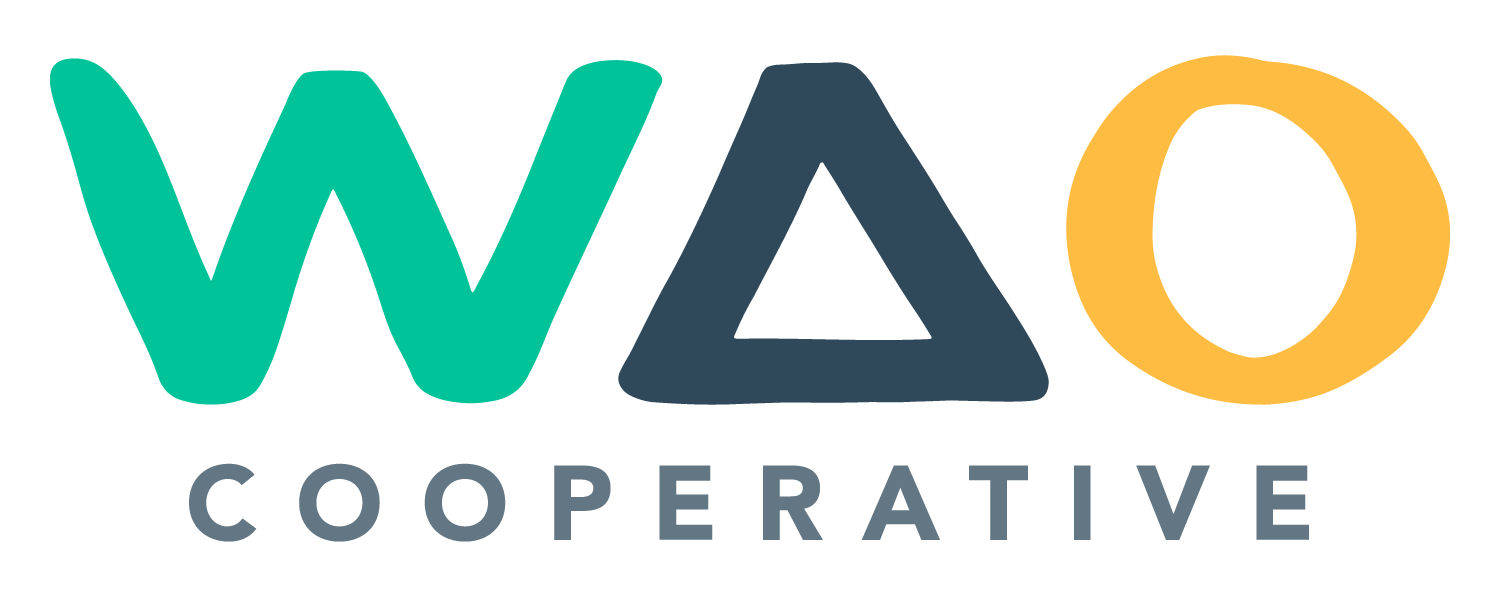
Discussion